Introduction
After a month spent wearing the Whoop MG day and night, I’m convinced this is the best fitness tracker I’ve used – with one major asterisk. You see, this thing is more like a pocket-sized clinic you strap to your wrist.
With the MG, Whoop has taken its signature screenless design and sprinkled in medical-grade ECG and daily blood pressure estimates. These features transform what was once a simple exercise recovery tool into what feels like the most advanced tracker you can buy. Yet all its smarts come at a price – every month.
There’s a certain thrill in waking up to a fresh batch of numbers that genuinely matter, rather than just another simple sleep-stage chart. Still, between certain strap restrictions, occasional tracking blind spots, and the hefty subscription, it’s far from perfect.
Design & build: Slim Jim
At first glance, the Whoop MG is virtually indistinguishable from its sibling, the Whoop 5.0. The only differences are the slightly chunkier conductive clasp and an LED status light.
The most standout design choice here is the lack of a screen. Unlike almost every other fitness tracker available, you can only see your readings in the companion app. Ordinarily, I’d want to see metrics on my wrist. But in Whoop’s case, I think the lack of a screen is a worthwhile feature.
Weighing a mere 27g, it’s light enough that I mostly forgot it was there, even under shirtsleeves. That said, it did take me about a week to get used the wearable on my non-watch wearing wrist. But that’s down to my own preferences rather than the Whoop. Its IP68 rating (up to 10m) means it shrugged off showers, hand-washing, and swims in hotel pools.
Like with a traditional smartwatch, you can swap out the straps to find something more stylish. Whoop even offers ankle straps, bicep bands, and underwear (that idea makes me squirm) that holds the Whoop sensor in body locations where it can get a reading. That’s ideal if you want to conceal the device when you need to dress up smart – something I cannot say about the Apple Watch. Personally I stuck with the wrist, but it’s good to know that I have options should I need it.
But there’s a problem. Only the included SuperKnit Luxe band lets you use ECG and Heart Screener functions. If you swap to a cheaper fabric or bicep band and you’re back to basic PPG tracking. This is down to how you take the readings, so it’s not exactly Whoop’s fault. But it doesn’t seem right that if you wear it elsewhere you only get half the functionality.
Fit and finish are spot-on. The smooth aluminium shell feels premium against skin, and the adjustable clasp snaps shut with a reassuring click. However, this shell is quite flimsy – I managed to accidentally bend it while taking the strap off. Speaking of, I found myself adjusting the strap tightness a lot in the first few days. Too loose and ECG readings failed, too tight and my wrist ached by afternoon. Once dialled in, comfort was exceptional throughout daily life and any activity.
Health & fitness: A lean, mean tracking machine
The Whoop MG really can track just about everything under the sun. That includes metrics like exercise strain and recovery to ECG readings, blood-pressure estimates, sleep stages, skin temperature and more. It combines optical PPG sensors, electrical ECG electrodes, and software algorithms to deliver daily health snapshots, on-demand heart screening, and predictive pressure models. You can view all of these readings in the app at any time.
Strain tracking remains the bread and butter of the Whoop ecosystem. It’s Whoop’s proprietary metric for quantifying your total exertion each day, on a scale from 0 to 21. It combines cardiovascular load (time spent in different heart-rate zones) with all your other movement movement. So walking around the shops counts, even though it’s not a workout.
Recovery is Whoop’s measure of how ready your body and mind are to tackle that strain again, calculated each morning as a percentage. It blends four pillars: heart-rate variability (HRV), resting heart rate (RHR), sleep performance, and respiratory rate – then benchmarks them against your personal baseline. I’ve seen my Recovery scores adjust wildly, being affected by sleep, travel, and alcohol. You can see which specific reading is causing a dip, and use the Whoop Coach to explain more thoroughly.
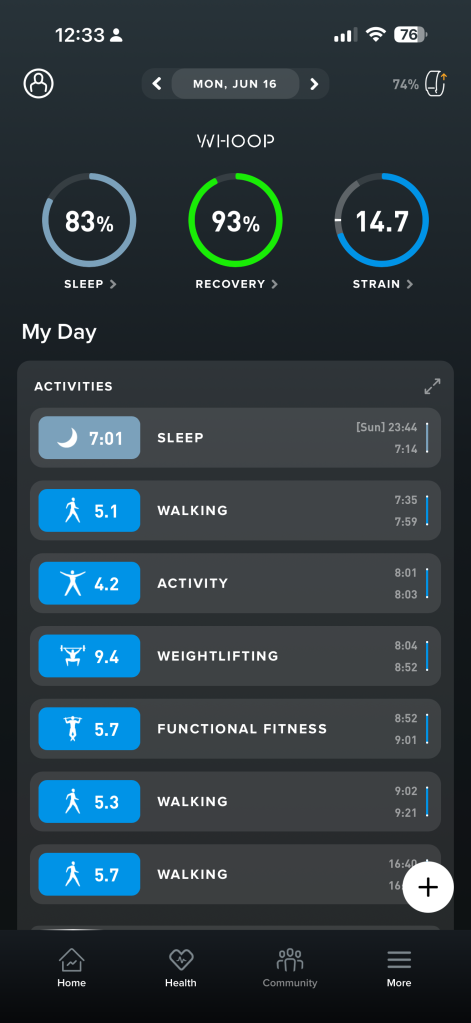
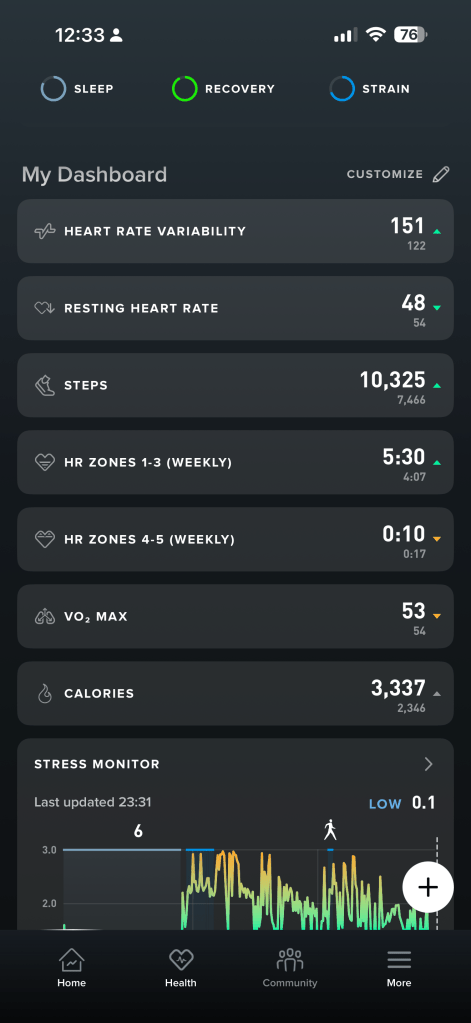
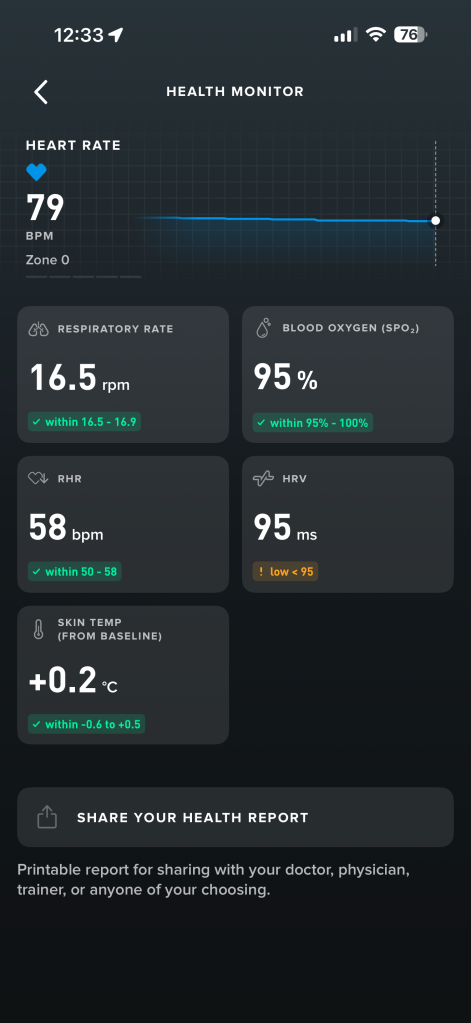
Where Whoop really shines is the dialogue between strain and recovery. Based on yesterday’s strain and today’s recovery, the app recommends an Optimal Strain target. So if you’ve done a heavy workout the day before, Whoop might tell you to take it easy the next day, or to do some light activity to boost recovery. I’ve found these personalised insights remarkably hard to argue with. Working hard on a red day always felt like a mistake, and on green days the extra oomph usually translated into better workouts.
Then we come to my biggest complaint about the Whoop MG: auto-detection. Let’s start with the easy stuff. It managed to detect long runs or walks I went on pretty reliably, but shorter bursts under fifteen minutes often slipped through the net. But that’s about it. Most of my other activity involves strength training, which Whoop really struggled to detect.
To avoid manual logging (so my workouts counted), I continued to wear my Apple Watch. The Whoop app syncs with Apple Health, so automatically grabs your workouts. It doesn’t grab any of the data, mind, so that’s all down to Whoop. For strength training, there’s an extra step you can take in the Whoop app to add your sets so it can calculate your muscle strain. It sounds great, in theory, but I seldom found myself using it thanks to the manual inputting required.
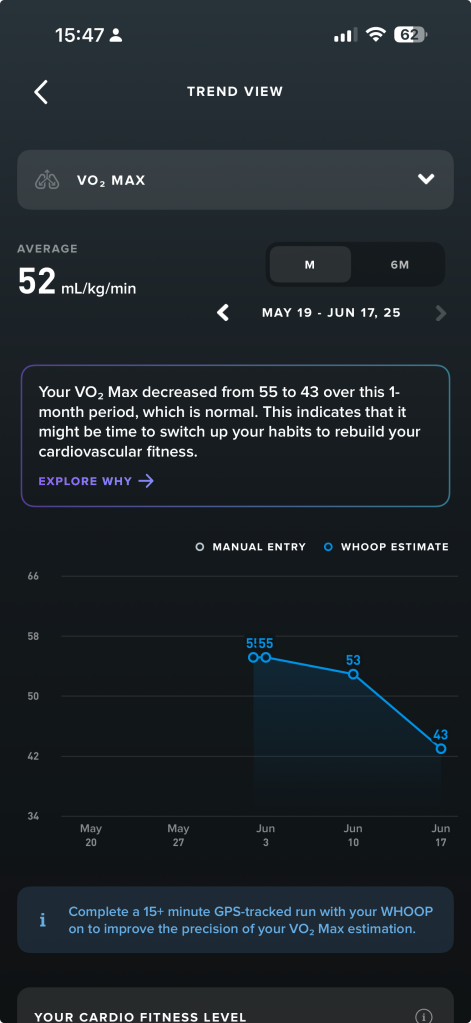
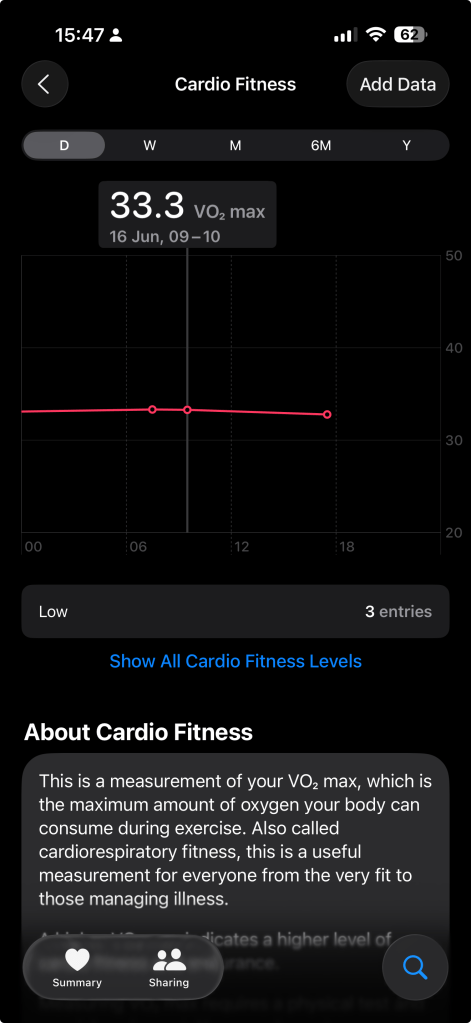
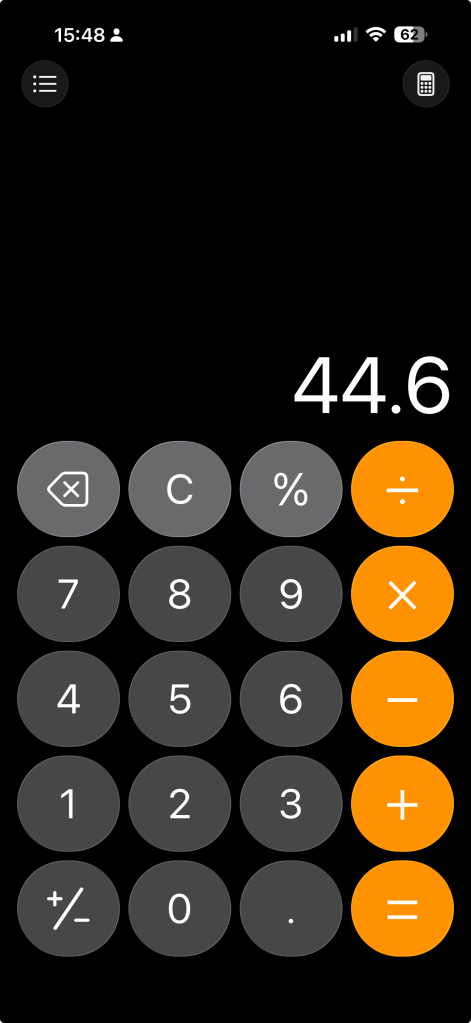
But just how reliable was the Whoop MG? For the most part, I found that its heart rate readings were almost identical to that of my Apple Watch, confirmed with a chest strap. This means your calorie and strain calculations are going to use some pretty accurate data. But, I got some mixed results in two key areas.
My step reading was an area that seemed slightly fishy. Counting to 1000 steps (yes, I really counted), my Apple Watch Ultra almost nailed it with a reading of 1006, but the Whoop struggled to count them all at around 950. I guess that underestimating is better than overestimating, but it’s a not insignificant amount. And since I’m hot on step tracking, it was particularly annoying for me.
The other area was the VO2 Max estimation. Whoop’s reading was wildly higher than my Apple Watch Ultra’s – almost a difference of 15ml/kg/min. To try and work out which was more reliable, I used the Cooper Run test. This showed that the Whoop was overestimating my VO2 Max (slightly high) while the Apple Watch was underestimating it – with the true reading somewhere in between.
Other fitness features: What can’t it do?
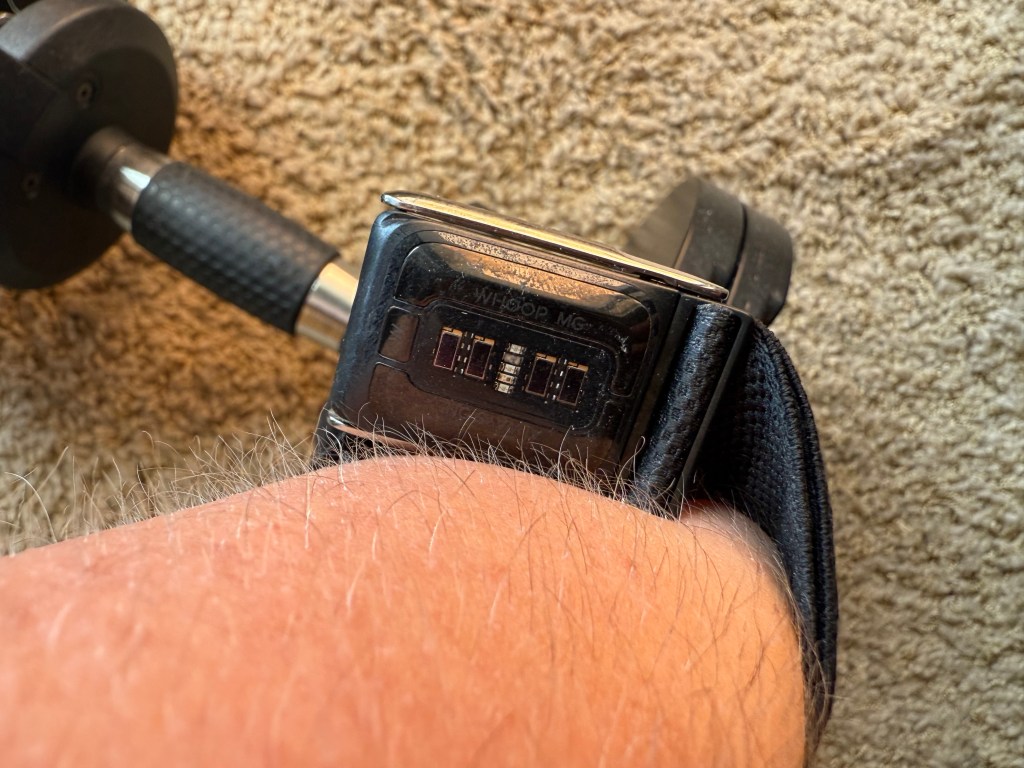
Whoop’s Healthspan feature took about three weeks to settle on a reliable “Whoop Age.” Mine was a surprisingly encouraging 3 years younger than my actual age, once my routine normalised. If you’ve used a Garmin watch, this feature is similar to the Fitness Age – though I’d argue Whoop’s visualisation of longevity metrics feels more intuitive. It tells you exactly which factors are affecting your Healthspan, and shows you what you can do about it. I found it to be a very motivating way of presenting data and insights.
ECG readings are delightfully straightforward. You just touch both electrodes on the SuperKnit clasp, count down 30 seconds, and the app confirms whether your ticker is behaving or if it spotted any irregularities. It’s an almost identical process to holding down the crown on my Apple Watch Ultra. It’s FDA-cleared and impressively robust, but utterly manual. This is no different to any other fitness tracker, but I found myself rarely using the feature. Regular prompts might be a helpful addition here.
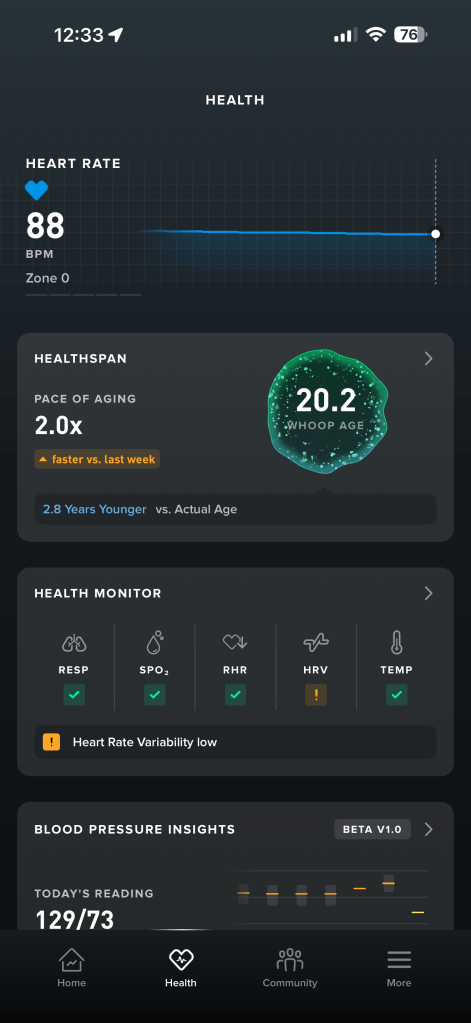
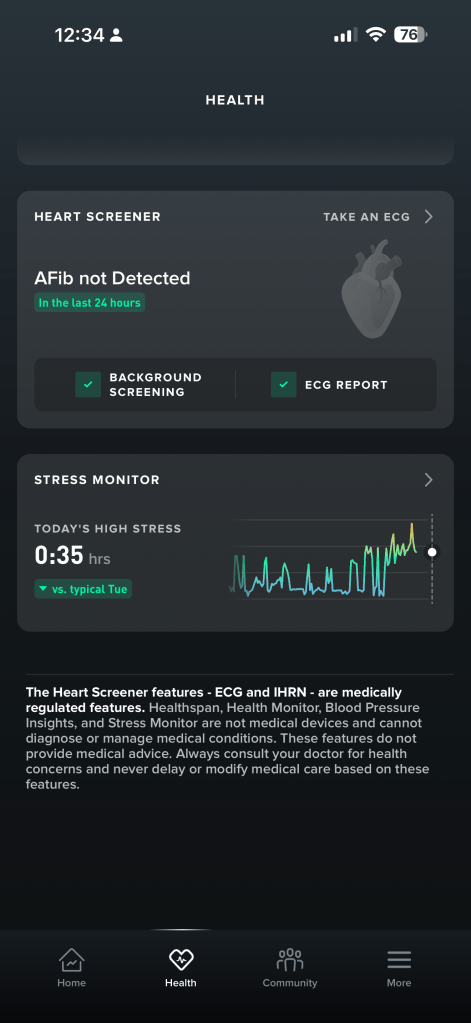
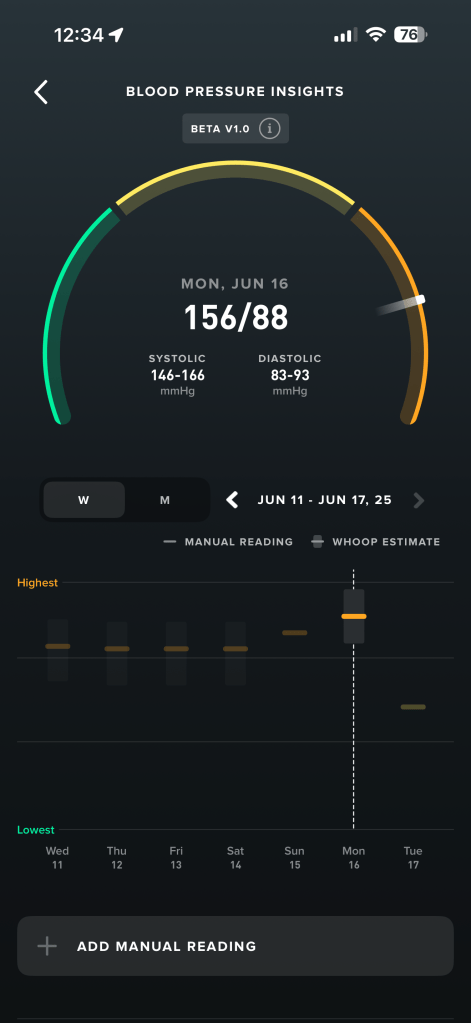
The blood-pressure estimates impressed me most of all, as someone that suffers from high blood pressure. Thanks, genetics. After three cuff-based calibrations (I used my Withings BPM Connect), the Whoop MG began tracking (it’s more like estimating, really) my blood pressure. It only does this overnight, so you’ll have to wait until each morning to check your readings. Consistently, I found that the algorithm tracked my blood pressure within 3 mmHg of my manual readings.
It’s not a replacement for a proper machine, but as far as wellness features go, having a ballpark figure without an inflatable cuff is ideal. I’m led to believe that every time you upload additional manual readings it improves what the algorithm spits out. Just bear in mind that errant calibration or wildly fluctuating pressure could send your metrics haywire.
Interface: Home-page hero


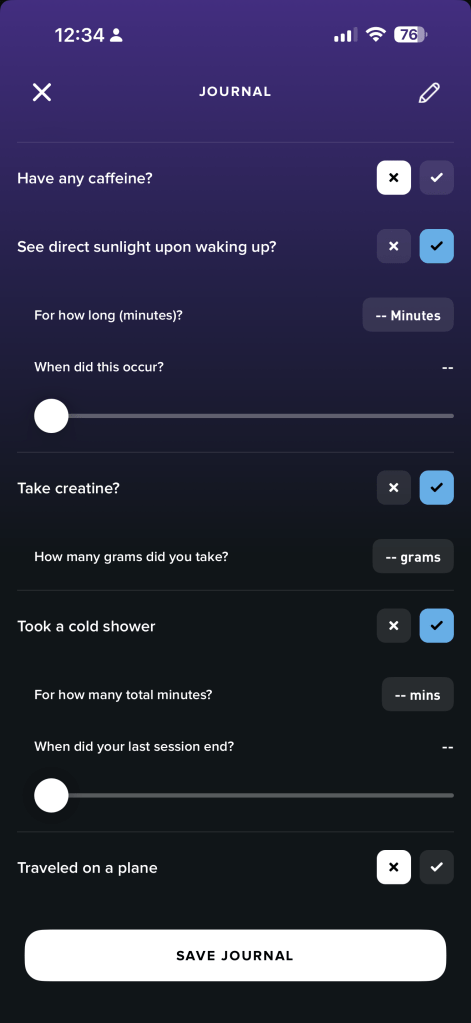
The Whoop companion app is one of the best designed and most intuitive apps out of all the fitness trackers I’ve used. The home screen gives you readings for Sleep, Strain, and Recovery – with access to their dashboards just a tap away. Integration with Apple HealthKit and Google Health Connect means runs logged in on your smartwatch or Strava appear in Whoop’s strain tally – no manual imports required.
Daily Outlook, powered by GPT-4, was a much more useful feature than I first thought. It delivers a morning briefing of yesterday’s key takeaways, the weather forecast, and personalised activity suggestions. I found it works particularly well when you combine it with the Journal feature that asks you questions about your day (like your caffeine intake, etc). I’ve loaded my Journal up with plenty of questions to get some thorough insights. There are over 160 lifestyle inputs to pick from!
It’s a truly clever feature – spotting that my HRV (and therefore Recovery score) was low after drinking a pint the night before, for example. Advice can feel generic at times (“consider a light session”) rather than pinpointed suggestions based on my activity history. But for the most part, I really like this feature. I just wish it automatically sent these outlooks rather than firing up a painfully slow chatbot page.
My biggest complaint about Whoop’s companion app is the lack of a simple search bar. Finding specific data points can feel like sifting through a haystack at times. For example, all your regular heart metrics are on the home page if you scroll down, but you need to head to the Health page to see the blood pressure readings. It was definitely somewhat confusing at first.
Battery life & charging: It just keeps going
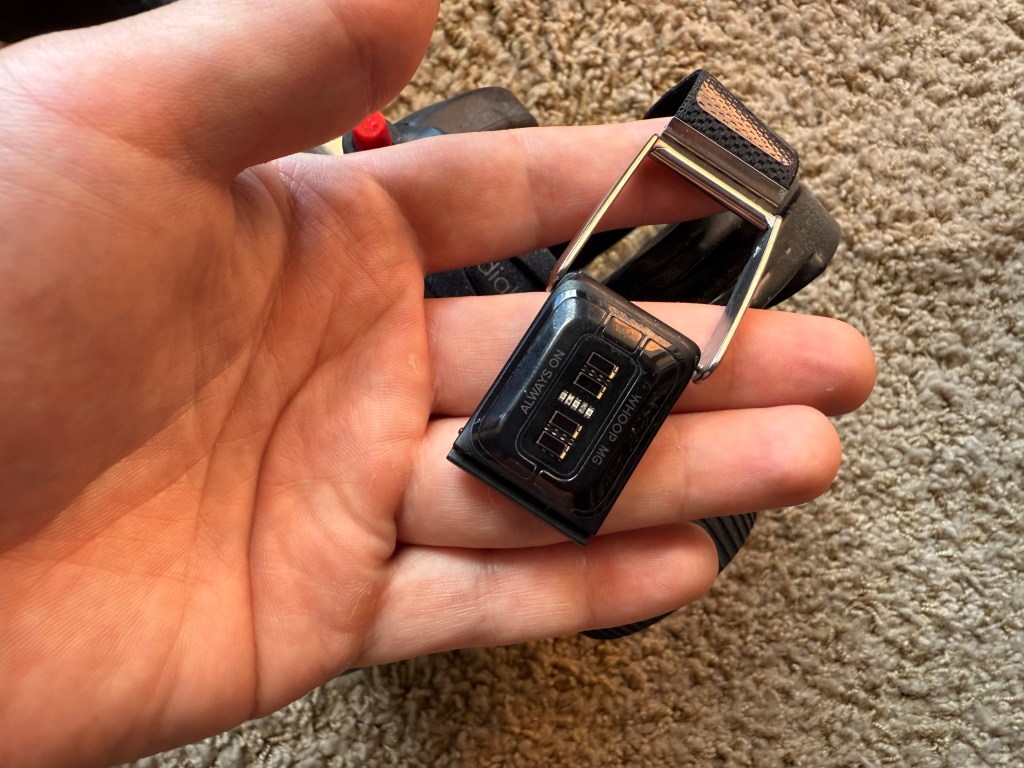
Credit to Whoop: the MG delivers a rock-solid two weeks of battery life, even with occasional ECG readings and round-the-clock PPG monitoring. In just over a month of testing, I only had to charge the Whoop twice from the 82% it was delivered on. I’m truly impressed by this thing’s reluctance to die.
Charging remains delightfully painless. The wireless charger clips on without you even noticing, and a full charge takes just under two hours. A single hour on the pad nets you about seven days of use, which is plenty if your routine includes nightly top-ups on your bedside table. You juice up the charger via a USB-C port, and the switch to a braided USB-C cable was appreciated.
Whoop MG verdict
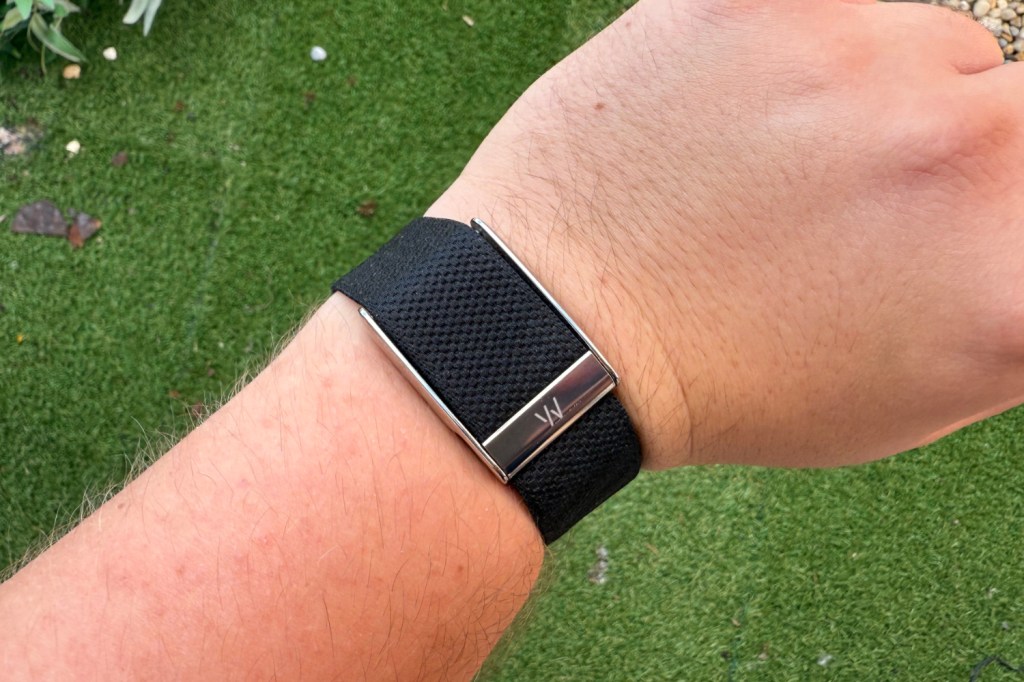
The Whoop MG is a polished evolution of Whoop’s screenless fitness tracker. It’s been elevated into quasi-medical territory with ECG and algorithmic blood-pressure tracking, and I love all the metrics it spits out. The hardware is understated yet feels robust; the app remains a triumph of clarity over clutter.
But the cost of admission is hard to swallow: $359/£349 per year for Whoop Life. Before the Whoop 5.0 and MG were released earlier in 2025, the previous 4.0 model came out in 2021. So you might end up using this thing for around four years – which is most $1500/£1400 in total. Other manual quirks, like strap restrictions and questionable auto-tracking, also temper the experience.
If you live and breathe fitness metrics, crave distraction-free data, and your bank balance can handle a luxury subscription, the MG is as good as it gets. For everyone else, the Whoop 5.0 on the Peak plan likely delivers 90 per cent of the value at a fraction of the cost. The one condition attached to awarding this thing the crown of best fitness tracker I’ve used? The fact I’ve still got to wear my Apple Watch for activity tracking.
Whoop MG technical specifications
| Sensors | PPG heart rate, ECG electrodes, accelerometer, skin-temperature sensor |
| Compatibility | iOS and Android (via Bluetooth LE) |
| Durability | IP68 (up to 10m) |
| Battery life | Approx. 14 days |
| Subscription | Whoop Life membership required ($359/£349 per annum) |
| Dimensions | 35x24x10mm, 27.3g |
Read the full article here
